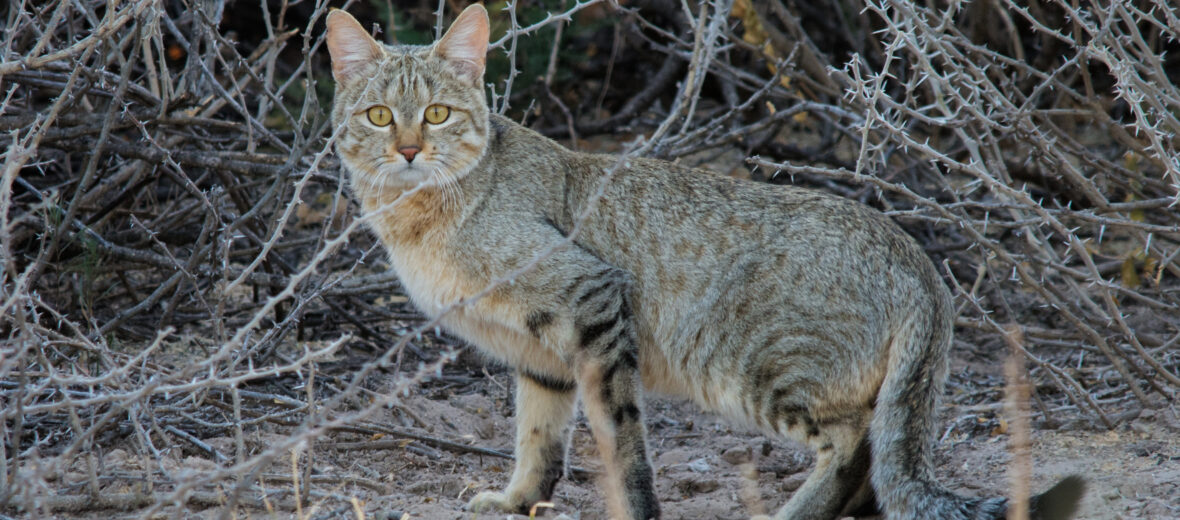
Domesticated in the Fertile Crescent around 9,000 years ago, the African wildcat is the closest relative to the common house cat. There are 9 known subspecies that can be found throughout Africa. Europe (3 subspecies) and Asia (3 subspecies) have their own wildcat species as well. Do to their stable numbers, they are listed as Least Concern by the IUCN.
First the Stats…
Scientific name: Felis lybica
Weight: Up to 14 lbs.
Length: Up to 2.4 feet, plus a 15.7 inch tail
Height: Up to 9 inches, at the shoulder
Lifespan: Up to 16 years
Now on to the Facts!
1.) They prefer forests, woodlands, wooded grasslands, rocky outcrops, savannahs, semi-deserts, and steppes.
2.) African wildcats are primarily nocturnal (active at night).
3.) Wildcats are solitary creatures, like most species of cat.
4.) These critters are very territorial and will mark their territory via scratching surfaces and scent marking.
5.) The wildcat hones their claws on trees to keep them sharp.
But wait, there’s more on the African wildcat!
6.) Wildcats are excellent climbers and can also swim, if necessary.
7.) After a 56 – 63 gestation (pregnancy), females give birth to 1 – 5 kittens. 3 – 4 kittens are the average though.
Did you know…?
The Libyan Posts created a postage stamp dedicated to the African wildcat in November of 1997 in cooperation with World Wide Fund for Nature.
8.) They prey on mice, rats, reptiles, birds, and insects.
9.) These cats fall prey to large birds of prey, larger cats, jackals, hyenas, wild dogs, foxes, and wolves.
10.) African wildcats suffer from competition by feral cats and diseases transmitted by domestic cats.
Now a Short African Wildcat Video!
Also, check out the Critter Science YouTube channel. Videos added frequently!
Want to suggest a critter for me to write about? Let me know here.



